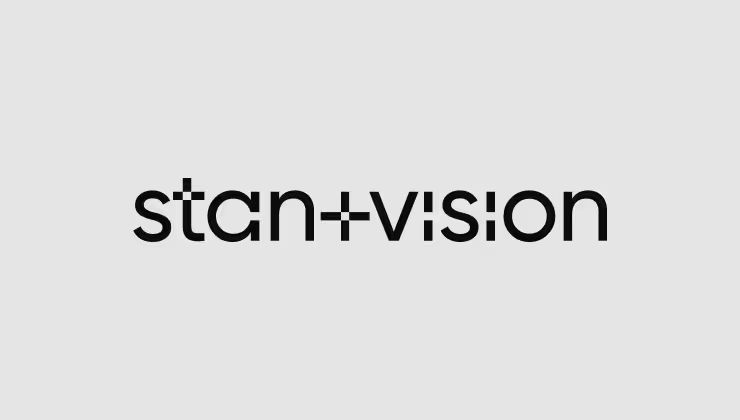By dividing infrastructure management from application code, serverless solutions provide numerous advantages, such as scalability, cost efficiency, and reduced operational overhead. As cloud computing advances, serverless development for web services is rapidly taking off, allowing businesses to focus on what matters—delivering value.
.avif)
What is serverless architecture?
Designing for serverless applications is like UX for invisible buttons—everything’s working perfectly, but nobody knows what’s holding it all together!

Serverless architecture refers to a cloud-computing execution model where cloud providers manage the infrastructure, dynamically allocating resources as needed. In this deployment model, developers can implement code without having to manage servers, scaling concerns, or maintenance. It doesn’t mean there are no servers involved—rather, the cloud provider, such as AWS, Azure, or Google Cloud, manages them entirely.
.avif)
For example, Amazon Web Services (AWS) Lambda, one of the most popular serverless platforms, allows developers to run code in response to events without provisioning or managing servers. Other serverless cloud services also include Google Cloud Functions and Microsoft Azure Functions, all of which support serverless development for web services.
How serverless architectures work
In a traditional web application, servers need to be continuously running and maintained to handle requests. In serverless architecture, functions (also known as microservices or "functions-as-a-service") are triggered by specific events, such as an HTTP request or a database change. The serverless provider automatically allocates computing resources used to execute the code and shuts down the resources after the function finishes running, allowing for dynamic scalability and cost savings.

The basic steps of serverless execution are:
- Event trigger: An event, such as a user request, initiates a serverless function.
- Execution: The cloud provider automatically provisions the required compute resources to execute the function.
- Response: The function is executed and the results are returned to the user or passed to other services.
- Scale automatically: If more requests are received, additional instances are launched seamlessly.
- Shutdown: When not in use, resources are deallocated, ensuring that no unnecessary costs are incurred.
Benefits of serverless architecture
Going serverless streamlines development by offloading server management to cloud providers, allowing businesses to focus on coding and features.
.avif)
1. Scalability on demand
One of the key drivers behind the rise of serverless architecture is its ability to scale automatically. Unlike traditional server environments where capacity planning and scaling need to be managed manually, serverless functions scale up or down based on demand. For SaaS (Software as a Service) companies and modern web applications that experience fluctuating traffic, this architecture provides elasticity without requiring server management or pre-allocated resources.
2. Cost-efficiency
Cost management is another reason why this architecture is gaining traction. With traditional hosting models, you pay for servers regardless of whether they’re fully utilized. In serverless application development, you only pay for the compute time you use, i.e., when your code is executed.
This "pay-per-use" model significantly reduces costs for applications with varying workloads. For example, an e-commerce website that experiences heavy traffic during the holiday season but lighter traffic at other times would benefit from this cost efficiency.
3. Reduced maintenance and operational overhead
Managing servers, patching security vulnerabilities, and performing updates to deploy applications can be time-consuming and expensive. With serverless architecture, cloud providers take over these responsibilities. This allows developers to focus solely on writing and improving application logic rather than managing infrastructure. Reduced operational overhead accelerates development cycles, which is crucial for companies aiming to be agile in a competitive market.
.avif)
4. Enhanced developer productivity
Developers using a serverless ecosystem can launch applications and features more quickly since they don’t need to spend time configuring servers or worrying about scaling. This approach enables smaller teams to deliver complex applications efficiently, making it ideal for startups and tech-driven enterprises. Additionally, the modular nature of serverless applications (where each function is independent) makes it easier to update, debug, and enhance individual components without affecting the entire system.
5. Global availability
-Serverless computing platforms are designed for high availability, distributing applications across multiple data centers globally. This ensures that applications can handle requests from users around the world with low latency. SaaS providers can, therefore, deliver more responsive user experiences, regardless of geographic location.
Examples of successfully applied serverless architectures
Several major companies and startups alike have embraced this architecture to improve scalability and reduce costs.
1. Netflix
Netflix, one of the world's largest streaming services, leverages AWS Lambda to handle a variety of tasks, from log analysis to managing backups. By using serverless functions, Netflix can process large volumes of data without needing to manage an extensive infrastructure. This helps them scale operations to millions of users while minimizing operational costs.
2. Coca-Cola
Coca-Cola used serverless architecture for its vending machine management system. By moving to AWS Lambda, Coca-Cola reduced the costs of running its services by only paying for the compute time used during interactions with the vending machines, rather than maintaining always-on servers. This has led to significant savings while providing a scalable and efficient way to manage the machines globally.
3. iRobot
iRobot, the company behind the Roomba vacuum cleaner, uses Google Cloud Functions for managing its fleet of internet-connected robots. Through serverless architecture tools, iRobot can handle massive amounts of data generated by millions of devices, scaling on demand as more users interact with their products.
Tips for businesses considering serverless architecture
1. Evaluate your workload
Serverless architecture is ideal for applications with unpredictable or fluctuating traffic. If your application has steady, predictable usage, you might still benefit from going serverless, but the savings may not be as significant as for those with variable workloads.
2. Focus on event-driven user cases
If your application involves tasks such as processing user requests, handling data streams, or performing backend operations, then a serverless framework could provide significant advantages. However, applications requiring long-running processes or high-performance computing may not be ideal for serverless.

3. Plan for cold starts
In serverless environments, "cold starts" occur when a function needs to initialize after being idle, which can result in slower response times for the first request. While modern serverless platforms are constantly improving cold start times, businesses should consider this latency when designing critical applications.
For performance-critical applications, strategies such as keeping functions "warm" or using hybrid models (combining both serverless technologies and traditional hosting) may help.
4. Understand pricing models
While this architecture can enhance operational efficiency and lower costs, it’s important to understand the pricing model of the cloud provider you’re using. Each platform has a unique way of charging for compute time, execution memory, and data transfer. Monitoring usage and optimizing code for efficiency will help avoid unexpected charges.

Serverless architecture played a pivotal role in 2024 and contributed to shaping the future of web development. Its scalability, cost efficiency, and reduced maintenance make it an attractive option for SaaS companies and enterprises looking to innovate faster and more effectively. By leveraging event-driven computing and focusing on microservices, businesses can create agile, responsive applications without the need to manage underlying infrastructure.
With major brands like Netflix and iRobot demonstrating the power of serverless development for web services, it’s clear that this architecture is more than just a trend—it’s a foundational technology for the future.






